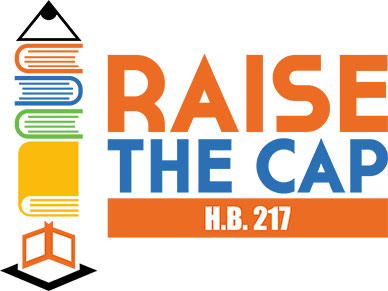
by Eric Cochling | Mar 29, 2017
A large majority of Georgians support expanding school choice in the state, including more than 80 percent of African-Americans and Latinos. The numbers are astounding, and for good reasons.
Georgia’s students continue to struggle in national measures of academic achievement, and the school choice options that currently do exist—like the tax credit scholarship program—are capped at such low levels that there are constantly long waiting lists.
Since it was first passed in 2008, the tax credit program has given tens of thousands of students the opportunity for a brighter future at a private school, but it has never served all the students who have applied for a scholarship. To do that, the program needs to grow.
First, a bit of background. Georgia’s tax-credit law allows private citizens and corporations to receive tax credits for donations to nonprofit Student Scholarship Organizations (SSOs), which then administer scholarships across the state on behalf of needy kids. In 2015 alone, over 13,500 students received scholarships.
The state House recently approved HB 217, which would raise the program’s current cap from $58 million to $100 million in a graduated course of six years, effectively doubling its size. But the Senate removed the slow and steady growth in the program in favor of a one-time increase in the cap to $65 million, hardly meeting current demand. Furthermore, the Senate version of the bill included an extreme cut to the administrative allowance available to the non-profit student scholarship organizations administering the program, which would effectively push smaller organizations out of the market.
Some lawmakers claim that SSOs spend too much on administrative overhead, including activities like fundraising, marketing, and government compliance. Currently, SSOs are limited to keeping a specific percentage of their total proceeds for administration, depending on how much they take in: 10 percent for the first $1.5 million raised, 7 percent for amounts between $1.5 million and $10 million, 6 percent for amounts between $10 million and $20 million, and 5 percent for amounts over $20 million.
This sliding scale acknowledges that as SSOs are able to raise more money, they don’t need to devote as large a percentage of their budgets to overhead. It also recognizes that smaller or start-up organizations still need a slightly higher percentage to be effective and comply with the law.
The Senate substitute to HB 217, backed by Lt. Governor Cagle and Senate leadership, eliminates the graduated administrative allowance in favor of an across-the-board cap of 3 percent. Importantly, most SSOs in Georgia don’t raise enough money to even afford full-time staff under the 10 percent administrative allowance, let alone a 3 percent cap. These organizations would be most harmed by the Senate change, while the largest SSOs would be least affected by the 3 percent cap due to their bigger budgets.
What’s the result? Small SSOs would be pushed out of the market in favor of a handful of large organizations.
Here’s what this scenario would look like in reality: Four SSOs raised less than $100,000 in 2015 and awarded scholarships to 308 students, almost half of whom come from families making less than $30,000 a year. The proposed change would immediately hamstring these organizations by limiting them to less than $3,000 a year for administration, forcing them to close their doors and returning 308 students back to schools that were not serving their needs.
Is that a result we want?
Aside from claims of administrative bloat, supporters of the Senate substitute bill make two more arguments: First, that SSOs should be brought more in line with other nonprofits in Georgia. And second, that the tax credits law should more closely mirror Florida’s program, which caps administrative allowances at 3 percent.
Both claims don’t stand up to even basic scrutiny. In the first place, of Charity Navigator’s 68 top-rated charities in Georgia, only one operates on less than 3 percent of funds for administration—and that organization has total revenues of more than $547 million. So it’s false to claim the proposed 3 percent cap would bring SSOs more in line with other nonprofits.
Secondly, looking at Florida’s law is like comparing apples and oranges. The Sunshine State only has two nonprofit scholarship granting organizations, only allows corporate donations, and has a total program cap of $500 million compared to Georgia, which has more than 20 active SSOs and a statewide a cap of $58 million.
In the end, if the Senate truly wants to bring Georgia more in line with Florida, lawmakers would be better served to raise the statewide program cap to match Florida’s rather than reduce the overhead allowance. If they did, the program would provide school choice to nearly 130,000 students and propel Georgia into the leadership position among states providing families with real options.
With only one day remaining in the legislative session, we hope the Senate and House can come together to agree on a bill that restores growth in the program and hope for thousands of desperate students and families.

by Georgia Center for Opportunity | Mar 29, 2017
Education savings accounts could help Georgia lawmakers ease overcrowding in public schools, an ongoing challenge for some school districts. Legislators are considering bills that would allow students to use an account to choose how and where they learn, modeled after the accounts in Arizona, Florida, Mississippi, Tennessee, and Nevada.
Under the proposed legislation, and as described on this blog, the state deposits a portion of a child’s funds from the state formula into a private account that parents use to buy educational products and services for their children. Parents can choose different learning options like online classes, personal tutors, and private school tuition simultaneously, customizing a child’s education to meet their needs.
Some Georgia parents have complained of surging enrollment in public schools in recent years. Between 2014 and 2016, Georgia public school enrollment increased 7 percent or 117,000 students, according to state and federal sources. Decatur’s increases have been dramatic: District schools experienced a 123 percent increase over the past decade. Recent reports of overcrowding have also come from Horry County, Dalton, and DeKalb. In some cases, students have been forced to sit on the floor of school buses on the way to school due to class reassignments.
In Dalton, a Daily Citizen headline said residents are imploring lawmakers to “do something” about student overcrowding. Data from states where lawmakers have enacted education savings accounts demonstrate that student participation can help relieve the pressure on schools that see rapid enrollment growth. In Arizona, 3,500 are using accounts today (approximately 1 percent of the eligible student population). In Florida, 7,000 students are using the accounts. These modest figures can help with overcrowding issues.
Estimates that 156,000 Georgia students would use the accounts after 3 years and cost taxpayers $700 million bears no resemblance to student participation or funding in other states where students are using the accounts. This estimate is equivalent to having all the students leave DeKalb County and Atlanta Public Schools.
Even Georgia’s existing private school choice options which have been in place for many years have not grown this fast. Georgia’s private school scholarships for children with special needs have been available for nearly a decade, and fewer than 4,000 students are using a scholarship. Another Georgia private school scholarship offering is available to nearly all state students, and 13,000 children are using a scholarship (less than 1 percent of students in the state)—a figure that has held steady since 2012.
Meanwhile, lawmakers should consider how education savings accounts can be an efficient use of taxpayer money. According to the legislation, each Georgia account would be worth $4,500. The average student attending a traditional public school in Georgia is funded at $10,300. Average per student funding figures indicate Decatur’s 4,662 students—an all-time high—require more than $48 million from taxpayers annually. Their education savings accounts would use less than half this amount.
Estimates that education savings accounts would syphon students and funds from Georgia schools do not correspond with existing evidence. But the accounts can be a solution for Georgia lawmakers to moderate crowded classrooms while also providing families more educational options.
For more information about ESAs in Georgia, click here.

by Georgia Center for Opportunity | Feb 28, 2017
Some things in life are guaranteed: death, taxes, and left-leaning professors in the ivory tower. Proof? The percentage of professors identifying as “far-left” increased from 42 percent in 1990 to 60 percent in 2014, according to UCLA researchers. Another study published last year found that professors who are registered as Democrats outnumber Republicans nearly 12 to 1. At Harvard, 84 percent of the faculty’s political contributions went to Democrats. The College Fix reports that the University of North Carolina-Chapel Hill, 17 departments have no professors registered as Republicans—zero.
As featured recently in the AJC, an Iowa lawmaker proposed legislation that would require universities to balance the number of Republican and Democrat-professing professors that schools hire. A bill so narrowly focused on universities’ employment practices leaves room—as well-intentioned legislation often does—for unintended consequences. Based on the polling above, there may not be enough professors on the right of the political isle to fill such a quota.
Lawmakers in Iowa—and Georgia—should consider a more fundamental issue: Protecting free speech on campus, no matter where you place yourself on the ideological spectrum. Disagree with many people in class? Engage in debate and discover the power of ideas and value of persuasion. So far this year, lawmakers in at least four states are considering resolutions or legislation that protects free speech on campus (Virginia, North Carolina, Florida, and Illinois). The new bills are modeled after Campus Free Speech: A Legislative Proposal by Stanley Kurtz from the Ethics and Public Policy Center and Jim Manley and myself from the Goldwater Institute.
The model legislation takes a comprehensive approach to protecting free expression on public college and university campuses. The bill prevents universities from designating so-called campus “free speech zones,” which actually limit what you can say and where you can say it. The bill allows individuals to speak and act freely on college grounds, as long as they do not interfere with others’ ability to do so. The bill also requires public universities to adopt mission statements in favor of free speech and make sure this material is available to existing and prospective students and faculty. Schools will be required to release an annual report on the condition of free speech on campus.
Colleges should be neutral on the issues and provide space for students and faculty to debate. Once students have left the college bubble, they are destined to encounter people with different opinions. Getting along and working peaceably with—and yes, when the time comes, even amicably disagreeing with—such people is a part of adulthood. No better time to practice these skills than when in college.

by Georgia Center for Opportunity | Jan 31, 2017
As the saying goes, you get what you pay for. Unless you’re a taxpayer, in which case you will get less than you wanted from Washington even though they used your money.
President Obama has left office, and the results of the ideas issued under his watch are coming in. Education research demonstrates we didn’t always get a bargain. A new study finds that a multi-billion-dollar federal grant program that incentivized district schools to change their operations neither changed such operations nor resulted in student achievement.
From 2009 to 2016, the U.S. Department of Education awarded School Improvement Grants (SIG). Each year, the agency divided approximately $500 million between states as part of Obama’s stimulus package to help ease schools out of the financial crisis that started in 2007. Georgia schools received approximately $16 million per year from 2014-16.
Schools could fire the principal, replace half of the teachers, and change instructional strategies like adding instructional time to the school day (part of what are called the “transformation” and “turnaround” methods); convert to a charter school; or close the school and send students to better-performing schools.
The result? SIG had no effect—none—on student achievement, graduation rates, or college enrollment.
Note this key detail: Researchers studied 1,200 participating schools and found that the transformation/turnaround methods were by far the most popular choices for schools. Just 33 schools converted to a charter school and 16 closed and allowed students to attend higher performing schools (3 percent and 1 percent of 1,253 schools, respectively). Thus, more money and grant applications promising to teach differently did not result in drastic changes.
Remarkably, researchers had already documented that some of the strategies SIG incentivized in the transformation/turnaround approaches were not supported by rigorous evidence: “Previous literature provides mixed evidence on the effectiveness of some of these practices at raising student achievement.” Yet Washington still spent some $7 billion over nearly a decade encouraging these activities.
Meanwhile, approximately 2,000 new charter schools opened without this federal slush fund from 2009 to 2016. Today, more than 6,000 charter schools operate nationwide. Charter schools are different state-to-state, but in some areas where all public school results disappoint, like Detroit, Michigan, charter schools are outperforming district schools. Those opposing President Donald Trump’s nominee for U.S. Department of Education Secretary, Betsy DeVos, have cited Detroit’s low scores and DeVos’s support of parental choice in Michigan as evidence that she is not qualified for the post.
But multiple studies demonstrate that Detroit charter school students are outperforming their peers in traditional schools. DeVos’s skeptics are free to scrutinize her policy positions, but opponents lose credibility when they misrepresent data.
Likewise, in Arizona, charter schools outperform district schools in terms of eventual college graduates. Charter schools account for 14 percent of Arizona’s total public school population, yet charter schools make up for 5 of the top 10 public schools in the state for students finishing college in 4 years.
Arizona charter schools—like nearly all charter schools in the U.S.—are producing these results despite being funded with less money per student than district public schools. Georgia charter schools are funded at approximately $3,000 less per student than district schools, and low-income 8th grade charter students are outperforming their peers in a national comparison. Now there’s a bargain.
Again, more SIG schools opted not to convert to a charter school with their grant money, choosing more administrative changes instead. And researchers did not find better student outcomes.
Let’s hope policymakers learned a lesson from a failed experiment relying on more taxpayer money for public schools. Lawmakers should commit to giving parents and children more quality educational choices over the next four years. Families will get a better deal when they can choose how and where their children learn.

by Georgia Center for Opportunity | Jan 25, 2017
Jamie Lord, GCO’s Director of Government Affairs, has been on the air waves discussing the benefits of school choice with the team at The Morning Show with Bill and Joel.

by Georgia Center for Opportunity | Nov 18, 2016
New research from EdChoice finds that Georgia’s scholarships for K-12 private school students have saved the state between $12 million and $85 million since 2011. Nearly two-dozen states have similar tax credit scholarship programs that allow individuals or businesses to make charitable contributions to K-12 private school scholarship organizations. The nonprofit scholarship organizations award scholarships to eligible students, and donors can take a credit on their state taxes that is equivalent to some or all of their donation.
EdChoice’s findings come at an important moment for state families because the state supreme court is considering a challenge to the program. Two years ago, the Southern Education Foundation supported four Georgia residents’ lawsuit to block state families from using the scholarships for their children. Recently, the Cato Institute filed an amicus brief in support of the scholarships.
“We urge the court to affirm the determination that the tax-credit program does not violate the state constitution, focusing on the fact that it does not involve spending public funds for any sectarian purpose,” write Ilya Shapiro and David McDonald.
In Georgia, individuals and businesses can receive a dollar-for-dollar credit for their contribution to scholarship organizations up to certain limits ($2,500 for a married couple and businesses can claim no more than 75 percent of their tax liability). Since 2010, scholarship organizations have awarded more than 60,000 scholarships for students to use at K-12 private schools.
Teacher unions, school board associations, and other associations regularly challenge parent and student educational options in court. Fortunately for families, courts have upheld tax credit scholarships around the country, without exception. The U.S. Supreme Court upheld the nation’s oldest such scholarships, in Arizona, in 2011.
The decision paved the way for students like Gabe Alba-Rivera to discover opportunities he didn’t know existed before his scholarship. In my 2014 interview with Gabe, he explains that he was born in Mexico and had little more than broken pieces of his school’s roof to draw hopscotch squares at recess. A bucket of water served two purposes when he used the bathroom—the first as his bathroom pass, the second to flush the toilet.
After moving to Arizona, Gabe used a tax credit scholarship—nearly identical to the scholarships available to thousands of students across Georgia—to attend Brophy Prep, where he was active in the school Robotics Club. Gabe earned a spot at MIT, where he studies 3-D printers.
Twenty-eight scholarship organizations serve Georgia families, and these groups awarded more than 13,000 scholarships last year. The state supreme court should uphold the lower court ruling and protect families’ freedom to choose the best learning opportunity for their child.





